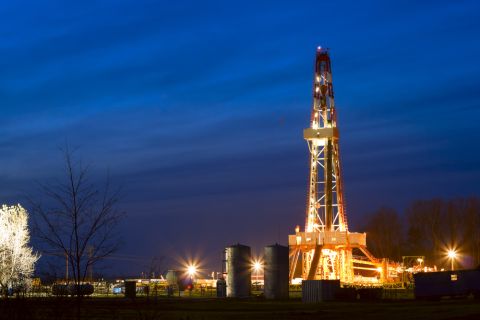The Marcellus shale play is the “Beast in the East” that will disrupt supply and demand and gas prices, according to Andrew Bradford, Northeast team leader for Bentek Energy LLC, the Colorado-based midstream research and consulting firm. The play’s surging production and vast potential are changing the North American supply picture, with Appalachian Basin gas output set to double by 2014.
“Demand is the wild card. Demand is a gray area we are starting to study more,” he said, speaking at Hart Energy Publishing’s Marcellus Midstream Conference & Exhibition held in Pittsburgh, Pennsylvania, in April.
“The mayor of New York City would like to rip all the No. 6-fueled boilers off apartment buildings and replace them with natural gas – but that cycle will be very time-consuming and expensive.”
Meanwhile, traditional gas supply basins such as the Gulf Coast, Rockies and western Canada are being displaced by Marcellus production. Canadian exports to the Northeast are at an all-time low. This is affecting the midstream space as well.
“This is a producer-push environment. More than 40 proposed pipeline projects in the Northeast represent 15 billion cubic feet a day of expansion by 2014,” he pointed out.
This may even cause the much-vaunted Rex (Rockies Express) Pipeline to have to reverse flow, back to the Midwest from its current endpoint in Ohio, Bradford said.
“Northeast price premiums could be under pressure. Marcellus production is potentially massive and disruptive to the market. Rex will not be the baseload gas it was once thought to be.”
As recently as October 2008, Pennsylvania gas production was about 300 million cubic feet a day. By March of 2010, however, it had tripled to reach 1 billion cubic feet per day (Bcf/d). “Now that we are short demand, we are long supply and long pipelines. Moving your gas east is no longer the no-brainer it once was,” Bradford said.
Throughout the entire Appalachian Basin, production totaled about 2 Bcf/d in 2007, but it is estimated to double to 4 Bcf a day by 2014, he added. Bentek “scrapes” all U.S. gas meters twice a day for data, using proprietary techniques, he said.
“From 2000 to 2007, if you were a Rockies producer, there was no question you drilled your wells in a low-cost way and moved the natural gas production to the east. The U.S. market was short of supply, which in fact had declined from 18 Bcf/d to 13 Bcf by 2007. We were short of demand and short of pipeline capacity. If you were a producer then, you’d be crying in your beer.”
Today it’s a whole different story. Bentek has drawn what it calls the Great Divide, a north-south line from Minnesota to Texas. Surging production from the Marcellus, other shales and tight-gas plays west of the line indicates “we have crashed through the Great Divide,” with additional production capacity of 5.4 Bcf/d.
“Since the summer of 2009 there has been ample pipeline capacity to move gas from the West, past the Great Divide to eastern markets.”
Pennsylvania activity is ramping up rapidly. The rig count is heading to 140. In Bradford County alone, some 77 horizontal wells have been drilled year to date, versus 87 in all of 2009. – Leslie Haines, from Hart’s Oil and Gas Investor
Recommended Reading
Comstock Continues Wildcatting, Drops Two Legacy Haynesville Rigs
2024-02-15 - The operator is dropping two of five rigs in its legacy East Texas and northwestern Louisiana play and continuing two north of Houston.
CEO: Continental Adds Midland Basin Acreage, Explores Woodford, Barnett
2024-04-11 - Continental Resources is adding leases in Midland and Ector counties, Texas, as the private E&P hunts for drilling locations to explore. Continental is also testing deeper Barnett and Woodford intervals across its Permian footprint, CEO Doug Lawler said in an exclusive interview.
For Sale, Again: Oily Northern Midland’s HighPeak Energy
2024-03-08 - The E&P is looking to hitch a ride on heated, renewed Permian Basin M&A.
Evolution Petroleum Sees Progress on SCOOP/STACK, Chaveroo Operations
2024-03-11 - Evolution expects to participate in future development blocks, holding in aggregate over 70 additional horizontal well locations.
Trio Petroleum to Increase Monterey County Oil Production
2024-04-15 - Trio Petroleum’s HH-1 well in McCool Ranch and the HV-3A well in the Presidents Field collectively produce about 75 bbl/d.





